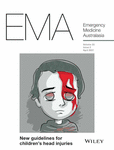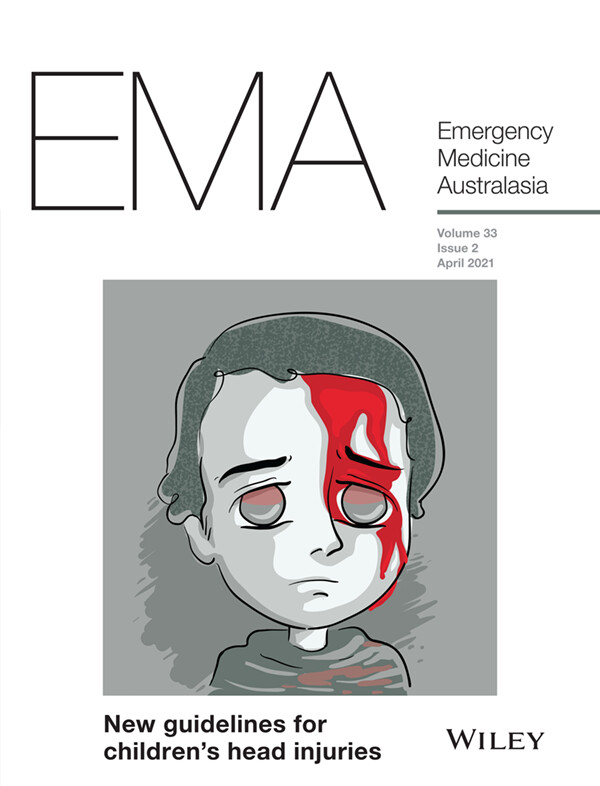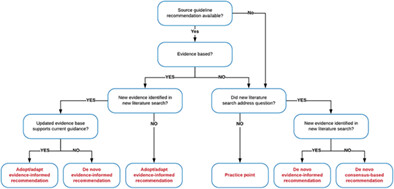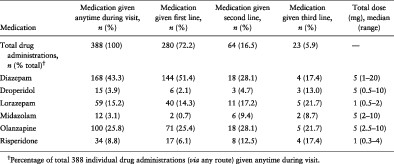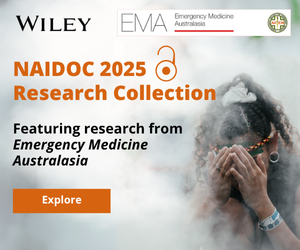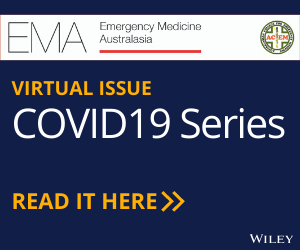Journal list menu
Export Citations
Download PDFs
Cover image
Issue information
In this April issue
Editorial
From knowledge generation to synthesis to translation
- Pages: 192-194
- First Published: 17 March 2021
Review Articles
Review article: Developing the Australian and New Zealand Guideline for Mild to Moderate Head Injuries in Children: An adoption/adaption approach
- Pages: 195-201
- First Published: 02 February 2021
Review article: Have emergency department time-based targets influenced patient care? A systematic review of qualitative literature
- Pages: 202-213
- First Published: 23 February 2021
This is a qualitative review of literature evaluating how time-based-targets impacted on patient quality of care in emergency departments. Thirteen studies from four countries, with the views of 617 stakeholders are presented. The impact of time-based-targets is varied, can be both positive and negative and successful implementation depends on whole hospital resourcing and engagement with targets.
Original Research
Australian and New Zealand Guideline for Mild to Moderate Head Injuries in Children
- Pages: 214-231
- First Published: 02 February 2021
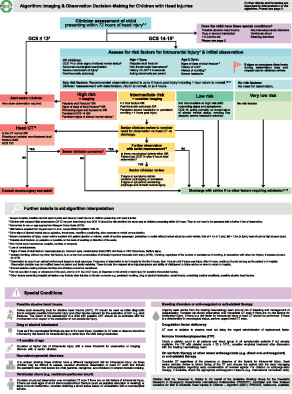
Children with a head injury are frequently evaluated in acute care settings. By adopting or adapting existing international paediatric clinical practice guidelines for head injuries or devising de novo recommendations, a multidisciplinary multistate working group led by the PREDICT network developed 71 recommendations (evidence-informed = 35, consensus-based = 17, practice points = 19). The resulting PREDICT Australian and New Zealand Guideline for Mild to Moderate Head Injuries in Children provides high-level evidence and practical guidance for front line clinicians.
After-hours emergency department care: Does time or day of arrival affect survival?
- Pages: 232-241
- First Published: 09 September 2020
Outcomes of laceration suture repair in the emergency department
- Pages: 242-249
- First Published: 25 August 2020

We assessed patient satisfaction with laceration management, post-ED care, cosmesis, and complication rates in 89 emergency department patients. Between one half and two thirds of patients were very satisfied with these outcomes. However, there is scope for improvement, especially for follow-up and wound care advice.
Lunacy in a tertiary emergency department: A 3-year cohort study of the association between moon cycles and occupational violence and aggression
- Pages: 250-254
- First Published: 27 August 2020
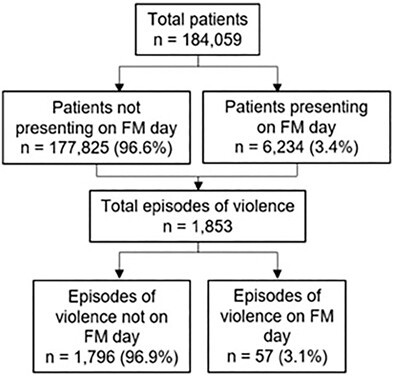
Occupational violence and aggression in the ED is an issue of global concern. Historically, the full moon has been steeped in myths and superstitions of madness and violence. We found that the first quarter and third quarter moons, but not the full moon, were associated with occupational violence and aggression in the ED.
Effect of simulation training on nurse leadership in a shared leadership model for cardiopulmonary resuscitation in the emergency department
- Pages: 255-261
- First Published: 27 August 2020
Empowering a senior nurse in a shared leadership role has been proposed as a more efficient setup for the cardiac arrest team in ED. We hypothesised that a structured simulation training programme that focused on implementing a nurse and doctor shared leadership model for CPR, would improve leadership and teamwork quality in the setting of cardiac arrest as measured by a Trauma Non-technical Skills (T-NOTECHS) teamwork scale. The present study showed that a short simulation training programme improved nurse leadership and teamwork performance in the setting of a shared leadership model for CPR in the ED which could easily be replicated in other departments.
To intubate or not to intubate? Predictors of inhalation injury in burn-injured patients before arrival at the burn centre
- Pages: 262-269
- First Published: 27 August 2020
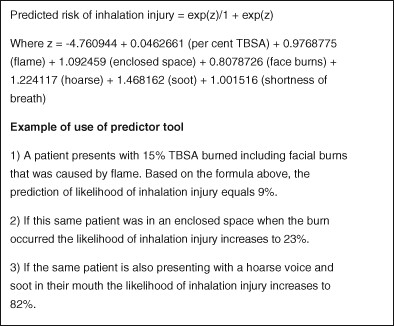
Our objective was to identify pre-burn centre factors associated with inhalation injury confirmed on bronchoscopy, and to develop a prognostic model for inhalation injury. Increasing percentage of total body surface area burned, flame, enclosed space, face burns, hoarse voice, soot in mouth and shortness of breath were predictive of inhalation injury.
Longitudinal description and evaluation of an emergency department avoidance strategy for a youth mass gathering (Schoolies) in Australia
- Pages: 270-278
- First Published: 15 September 2020
An in-event health service, operational during mass gatherings such as Schoolies, may reduce pressures on local EDs by offering rapid, targeted care for potentially vulnerable youth; decrease requirements for hospital transport and minimize impacts on care provision for the local community. Given increases in ED crowding and pressures on ambulance services, such care models may be worth considering for other types of mass-gathering events and in other locations.
Innovative pathway for managing children and adolescents with mental health concerns in the emergency department: An intervention feasibility study
- Pages: 279-285
- First Published: 03 October 2020

Kids assessment and liaison for mental health (MH) pathway at ED. Internationally, concern about meeting the need of an increasing number of children and adolescents presenting to ED with MH difficulties in an effective and timely manner is well documented. This paper describes one approach to increase capacity of ED while enhancing collaboration between ED and MH clinicians.
Paramedic streaming upon arrival in emergency department: A prospective study
- Pages: 286-291
- First Published: 14 September 2020
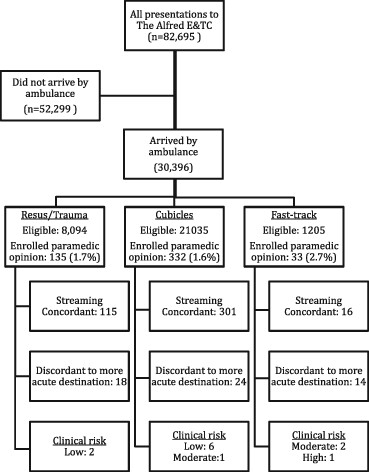
The role of paramedics in ED streaming models has not been adequately explored. We prospective surveyed paramedics in 500 cases and found the overall concordance between paramedics' and nurse streaming decision was high (86.4%). There was no significant clinical risk in most cases (64/68) where nurses and paramedics disagreed.
Psychotropic medication use for paediatric mental health patients in an emergency department
- Pages: 292-301
- First Published: 30 September 2020
Using non-mydriatic fundus photography to detect fundus pathology in Australian metropolitan emergency departments: A prospective prevalence and diagnostic accuracy study
- Pages: 302-309
- First Published: 17 September 2020

We conducted a prospective cross-sectional study investigating non-mydriatic fundus photography as a new diagnostic test for adult ED patients presenting with headache, focal neurological deficit, visual disturbance or diastolic blood pressure>120mmHg. Amongst 345 consecutive patients 16% (95%CI:13 - 21%) had urgent fundus pathology, and ED doctors had 40% sensitivity (95% CI 27% - 54%) and 82% specificity (95% CI 76% - 86%) to detect this pathology on fundus photographs. Fundus photography with telehealth specialist image review detects a clinically significant proportion of fundus pathology and offers an alternative to direct ophthalmoscopy to detect some time-critical illnesses that can be missed in routine care.
Lost bed capacity in emergency departments: A descriptive analysis and data visualisation exploration
- Pages: 310-315
- First Published: 13 October 2020
A considerable proportion of ED length of stay is because of patients remaining in an ED bed after their emergency care is concluded. Lost bed capacity is a new metric devised to capture this opportunity cost and novel heatmaps may be useful to visualise the effect of lost ED bed capacity.
Impact of national lockdown towards emergency department visits and admission rates during the COVID-19 pandemic in Thailand: A hospital-based study
- Pages: 316-323
- First Published: 18 October 2020

National lockdown was associated with a significant reduction in average daily ED visits across traumatic and non-traumatic patients. Although we could not conclude the cause of these changes, communication from healthcare professionals and public health officers is warranted to reinforce the importance of timely ED visits for acute health conditions.
Mental health presentations to Christchurch Hospital Emergency Department during COVID-19 lockdown
- Pages: 324-330
- First Published: 20 October 2020
A retrospective, comparative cohort study in Christchurch Hospital, New Zealand, of mental health presentations to the ED during COVID-19 lockdown. During the COVID-19 lockdown, both overall ED presentations as well as mental health-related presentations decreased. There was a relative increase in overdoses and self-harm, particularly involving paracetamol and ibuprofen.
Epidemiology and clinical features of emergency department patients with suspected COVID-19: Insights from Australia's ‘second wave’ (COVED-4)
- Pages: 331-342
- First Published: 14 December 2020

In this prospective multi-site study during Australia's ‘second wave’, a substantial proportion of ED presentations required SARS-CoV-2 testing and isolation. The presence of SARS-CoV-2 on nasopharyngeal swab was associated with an increase in the odds of death and mechanical ventilation in hospital.
Does volume or occupancy influence emergency access block? A multivariate time series analysis from a single emergency department in Sydney, Australia during the COVID-19 pandemic
- Pages: 343-348
- First Published: 02 January 2021
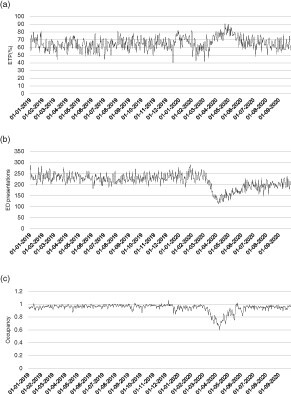
Evidence exists supporting the observation that ED overcrowding and access block result in poorer patient outcomes. Our results showed that the main determinants of the reduction of ED overcrowding and access block during the COVID-19 pandemic were associated with reductions in hospital occupancy and elective surgery levels.
Global Emergency Care
Factors affecting the non-urgent consultations in the emergency department of a tertiary hospital in the Philippines: A cross-sectional study
- Pages: 349-356
- First Published: 19 January 2021
Trainee Focus
Medical simulation and the holy grail of psychological safety
- Pages: 362-366
- First Published: 09 March 2021
Short Report
Prescription medication use by emergency department doctors to improve work and academic performance, and to manage stress and anxiety
- Pages: 369-371
- First Published: 02 February 2021
Perspective
Responding to the COVID-19 pandemic: The experiences of South Australia's Rescue, Retrieval and Aviation Services
- Pages: 375-378
- First Published: 02 January 2021
Is waiver of consent for the use of health information for research acceptable to emergency department patients?
- Pages: 379-384
- First Published: 27 January 2021
Research, kindness and the antifragility of emergency medicine
- Pages: 385-387
- First Published: 31 January 2021
Case Letter
Temporising the bleed: Use of resuscitative endovascular balloon occlusion of the aorta to transfer a haemorrhaging patient in regional Australia
- Pages: 388-389
- First Published: 28 December 2020
Letters to the Editor
Key to Choosing Wisely campaign: Clarifying the target for educational intervention
- Page: 390
- First Published: 04 February 2021
Droperidol should not be considered first line therapy in acute behavioural disturbance of older patients
- Pages: 390-391
- First Published: 09 February 2021




